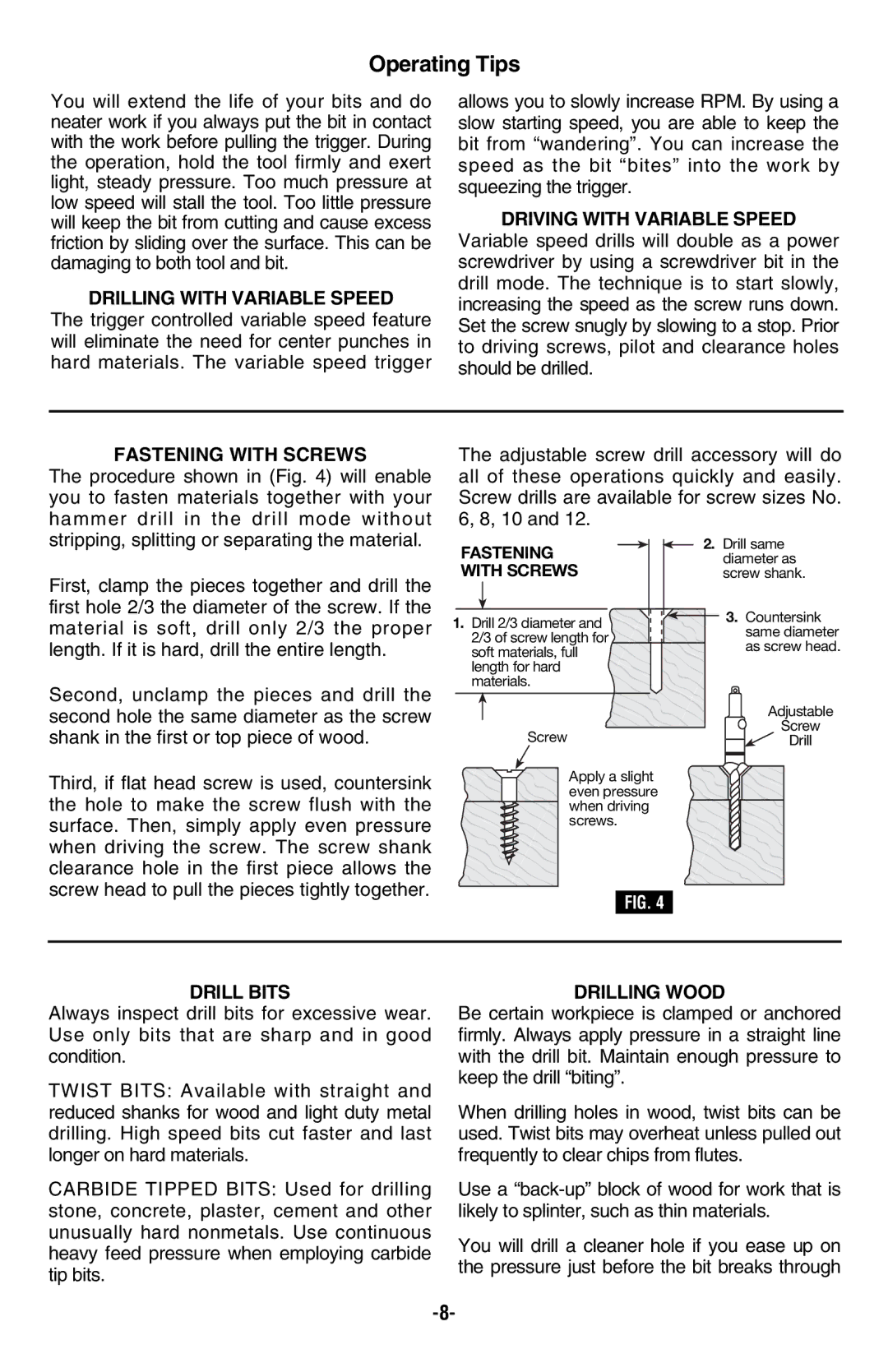1005VSR, 1004VSR specifications
Bosch Power Tools is renowned for its innovation and reliability, and two models that stand out in their lineup are the Bosch 1004VSR and the Bosch 1005VSR. Both tools exemplify the company’s commitment to high quality, efficiency, and user-friendly features, making them essential for professionals and DIY enthusiasts alike.The Bosch 1004VSR is a powerful 1/2-inch corded drill/driver that combines an impressive 7.0 amp motor with the versatility needed for various applications. With a variable-speed trigger, users can easily control the speed from 0 to 2,800 RPM, ensuring they have the right power for every task. The drill also features a 1/2-inch single-sleeve chuck for easy bit changes and enhanced bit gripping strength. This model is designed for both drilling and driving, with a maximum torque of 600 in-lbs, making it suitable for heavy-duty tasks.
On the other hand, the Bosch 1005VSR is a step up in terms of features and technology. It includes a 7.5 amp motor, delivering additional power while maintaining a lightweight profile for ease of use. Like the 1004VSR, it offers a variable-speed trigger, but reaches speeds of 0 to 3,000 RPM. This increased speed capability makes it particularly effective for professionals who require fast drilling and driving solutions. The keyless chuck allows for quick bit changes, while a two-speed transmission provides flexibility between high torque and high speed.
Both models are equipped with enhanced ergonomics, making them comfortable to use for extended periods. They feature soft-grip handles that reduce user fatigue and improve overall control. The compact design of each tool allows for work in tight spaces, a vital characteristic in many construction and renovation projects.
In terms of durability, Bosch has integrated advanced materials and engineering into these tools, ensuring they can withstand rigorous job site conditions. They are designed with heat-resistant motors that help extend their lifespan, providing long-lasting performance.
With features like built-in LED lights and built-in anti-slip clutches, the Bosch 1004VSR and 1005VSR are designed to improve user experience and enhance job efficiency. These tools represent Bosch's ongoing commitment to providing high-quality, reliable power solutions for both professional tradespeople and home improvement enthusiasts.

